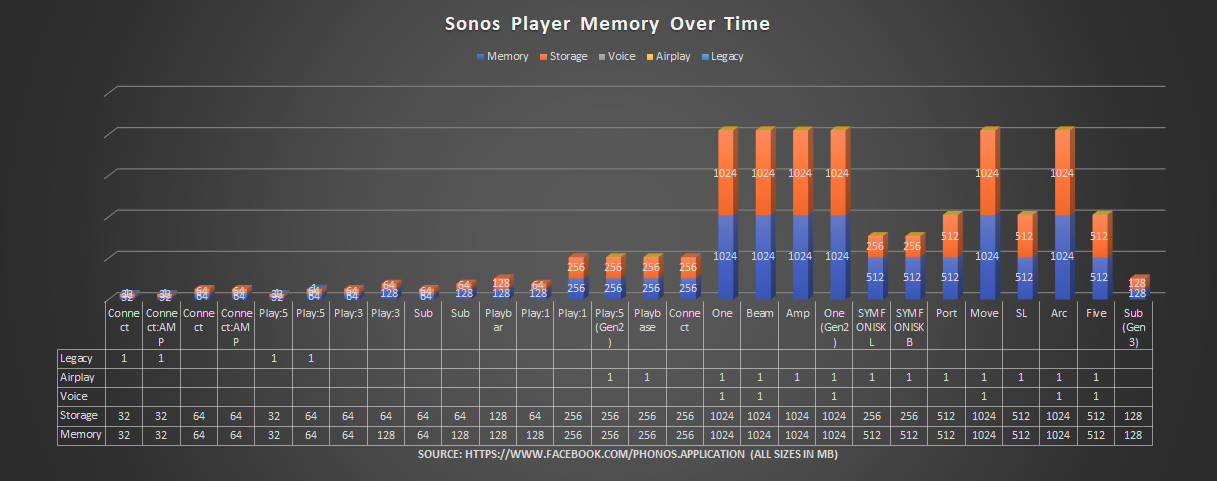> > > > > > Maybe I'm being harsh, but wouldn't it have made sense for Sonos to raise memory sizes from year to year as memory became much cheaper? Take a look this web at how little Play:5 Gen1 had to begin with.
Memory specifications have changed over time.
This topic has been closed for further comments. You can use the search bar to find a similar topic, or create a new one by clicking Create Topic at the top of the page.
Enter your E-mail address. We'll send you an e-mail with instructions to reset your password.


